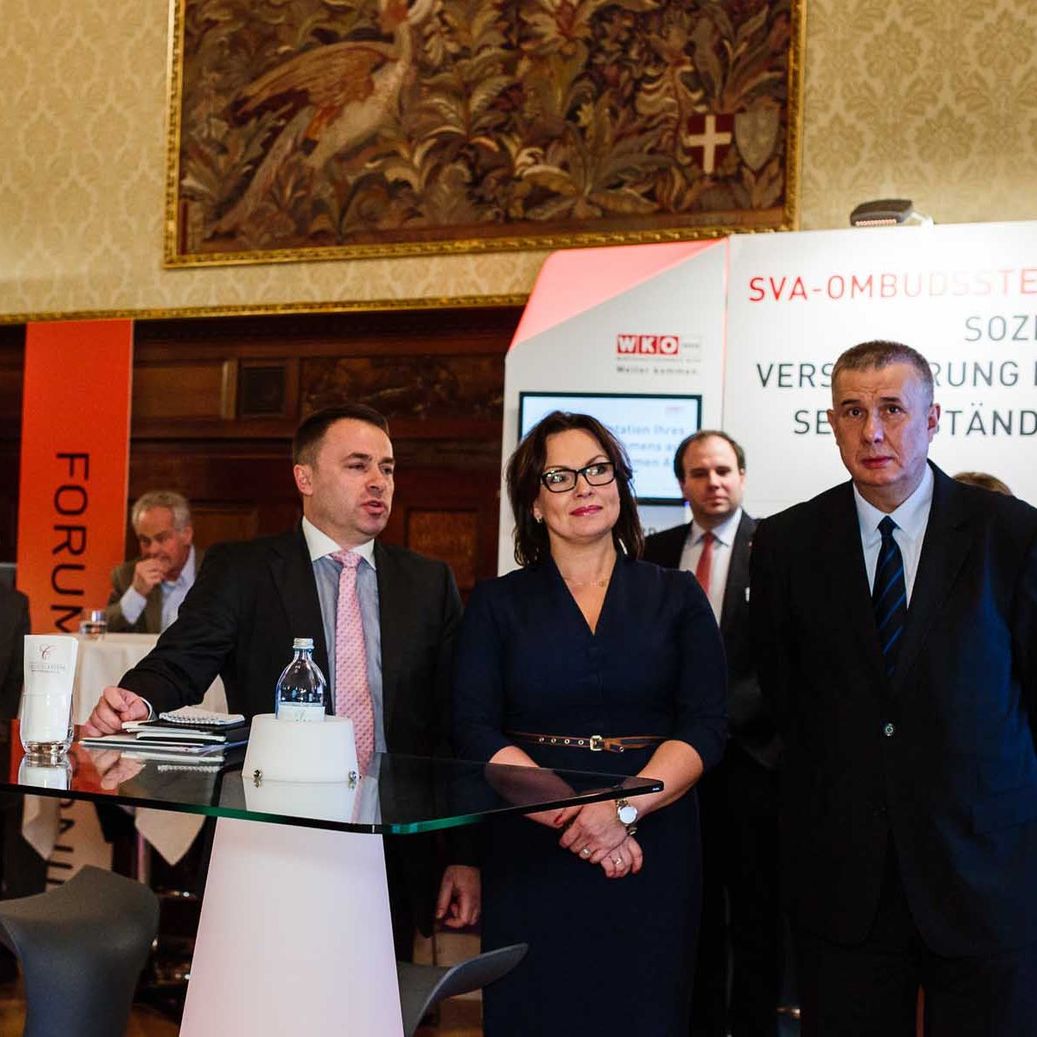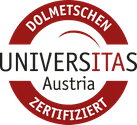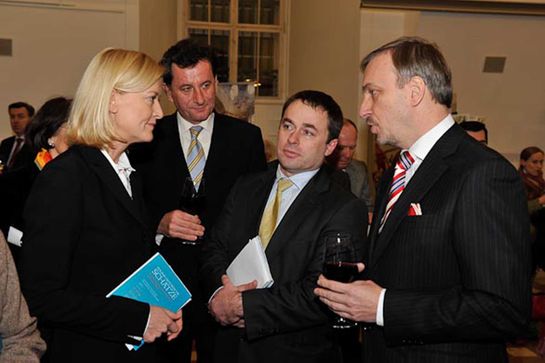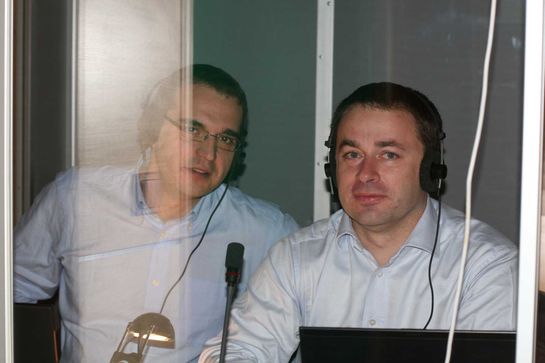Services - Conference Interpreting, Consecutive Interpreting, Technical Translations and more in Vienna


Interpreting
Conference interpreting (simultaneous interpreting)
Simultaneous interpreting is the synchronous or simultaneous translation of the spoken text into the target language by means of a simultaneous interpreting system and is used in particular at events for a larger group of people such as meetings, congresses and conferences. At events with two or more working languages, interpreters are working in a soundproof booth. This type of interpreting requires maximum concentration and is only carried out by professionally trained interpreters. For this reason, at least two interpreters per language work at regularly changing intervals of approx. 20-30 minutes. The participants of a venue follow the interpretation through their headphones.
A big advantage of simultaneous interpreting is not only the time saving factor, but also the avoidance of noise interference and ensuring proper communication in several languages. The situation is different when it comes to consecutive interpreting.
Whispered interpreting
Whispered interpreting is a form of simultaneous interpreting and is suitable, for example, for factory visits, tours, guided tours, smaller events. This form of interpretation is carried out simultaneously. Whispered interpreting is also used for state visits. Generally, this interpretation technique does not require major technical equipment.
Whispered interpreting without technical aids, however, is suitable only for one or two persons (recipients). In this case, the interpreter sits behind or between his listeners and literally “whispers” the interpretation into their ears.
The second variant uses a mobile whispering system with a transmitter for the interpreter and receivers for the listeners. In this case, the interpreter carries the mobile whispering system on him and can therefore position himself freely in the room.
Consecutive interpreting
The term consecutive interpreting refers to the time-delayed transmission of longer (up to 15-minutes) speech segments, usually using notes (taken in a special notation technique) after the original text has been read/spoken. In this case the interpreter comes into direct contact with the conversational partners. Consecutive interpreting is suitable for small-scale events (dinner speeches, welcome speeches, receptions, press conferences, etc.) where only two working languages are used. The number of consecutive interpreters required depends on the level of difficulty and duration of the assignment. Because of the time-delayed - in comparison to simultaneous –interpreting, about twice the time has to be calculated for the communication to be completed. The advantage of consecutive interpreting is that no interpreting booth or simultaneous equipment is required.
Liaison interpreting (conversation interpreting)
A subtype of consecutive interpreting is liaison or conversation interpreting. Also in this case the consecutive interpretation technique is used, i.e. with a time delay. In contrast to classical consecutive interpreting, however, no notes are taken. No technical aids, such as a whispering or interpreting system, are required here either. This procedure usually takes place during meetings, negotiations or conversations in which only a small number of people are present.
Escort interpreting
Escort interpreting is a variant of negotiation interpreting. The escorting interpreter accompanies his client for trips, events, factory tours, guided tours or at trade fairs.
Conference equipment (interpreting equipment)
Do you need conference equipment (simultaneous interpreting equipment)?
For your event, there is also the question of the required conference equipment: Simultaneous equipment or mobile whispering system? How many headphones are required? Which technology is suitable? Should the sound of the event or the interpretation be recorded? We will be happy to advise you on these and other questions. On request, we can also organise the necessary conference and simultaneous interpreting equipment for you in cooperation with one of our partners.
Suggestions for speakers
Tips relating to speech rate and how to prepare and use manuscripts, presentations, anecdotes and how to provide preparatory material for the interpreters can be found here (in German only):



Translating
We translate texts from a wide variety of specialist fields for you. In order to guarantee the highest quality, our translations are carried out by native speakers or edited by a linguist of the respective target language. In our work, we use CAT tools, i.e. computer-aided translation programs such as Trados Studio 2015 and Trados Multiterm 2015 to compile glossaries, if necessary. This enables us to ensure that an individual customer translation memory is created for your translations and that your own glossary, if available, can be stored automatically.
In addition to general translations, subtitling and proofreading, we also offer specialist translations and certified translations in the following fields:
- Business: general correspondence, correspondence, employment certificates, proofs of employment, balance sheets, business reports, minutes, pay slips, financial reports, annual reports, presentations, general terms and conditions, etc.
- Technology: Operating instructions, patent specifications, technical data, product descriptions, maintenance instructions, user manuals, technical manuals, work books and software, safety instructions, training documents, etc.
- Private: letters, expert opinions, certificates, application documents, diplomas, certificates, CVs, job references, etc.
- Law: contracts, documents, legal texts, court orders, court files, penalty orders, requests for legal assistance and forms, interrogation reports, statements of claim, etc.
- Medicine: medical literature, diploma theses, package inserts, forms, medical reports, diagnoses, instruction in anaesthesia, etc.
- Advertising: press releases, flyers & image brochures, trade fair catalogues, websites, specialist articles & news texts, PowerPoint presentations, product analyses, product labelling, etc.

